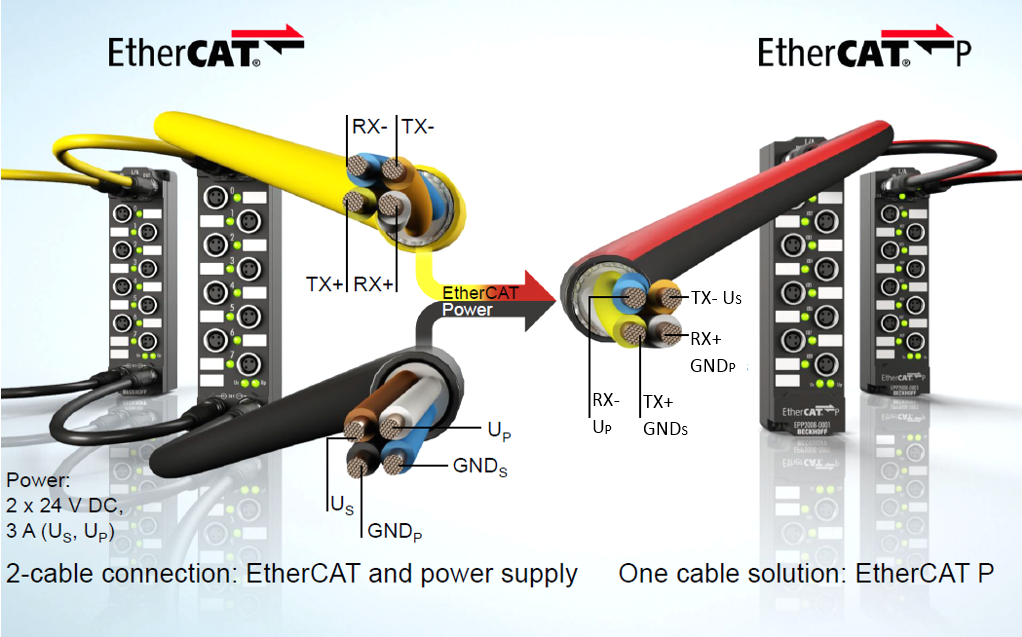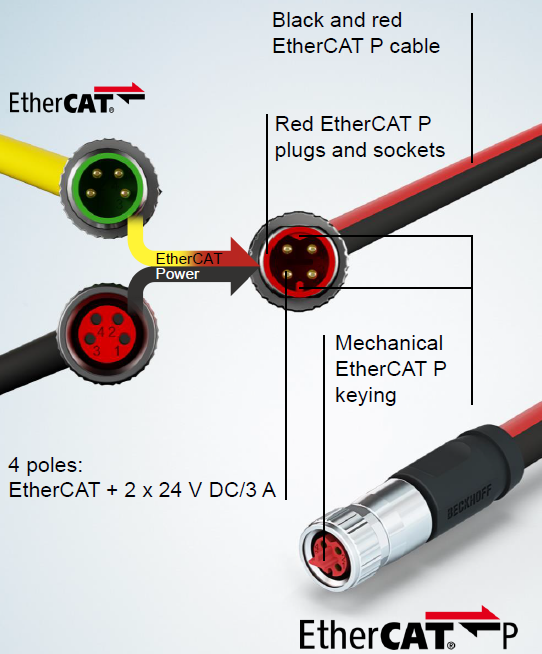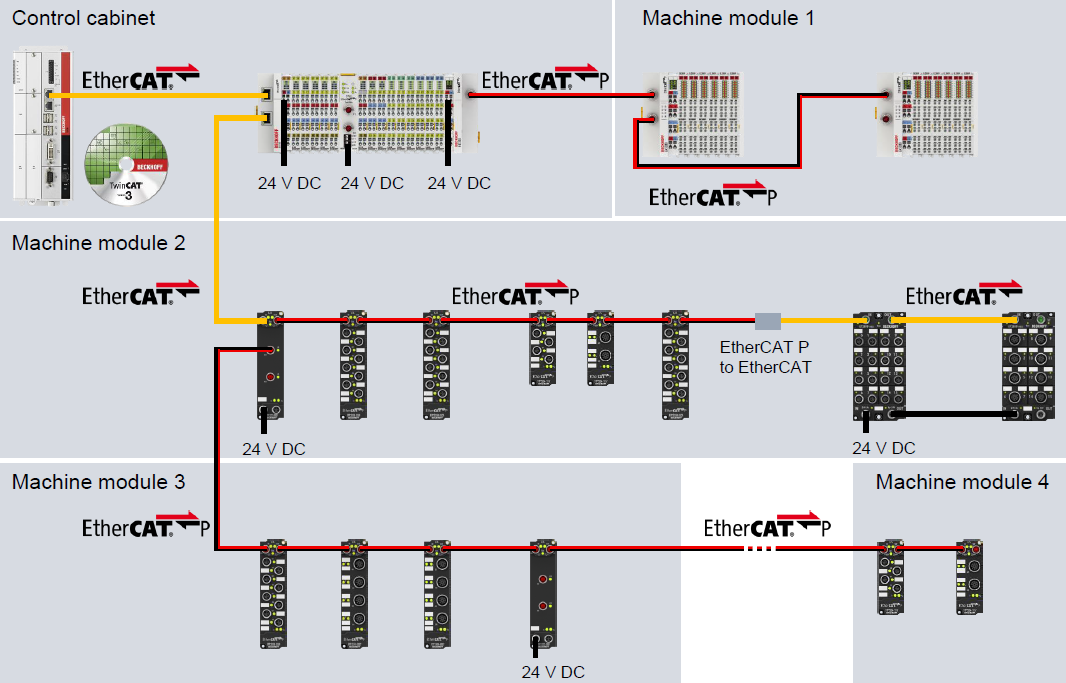EtherCAT P introduction
One cable solution for the field level
With EtherCAT P, Beckhoff combines communication and power in a single 4‑wire standard Ethernet cable. The 24 V DC supply of the EtherCAT P slaves and of the connected sensors and actuators is integrated: US (system and sensor supply) and UP (peripheral voltage for actuators) are electrically isolated from each other and can each supply a current of up to 3 A to the connected components. At the same time, all the benefits of EtherCAT, such as: Cascadable in all topologies (star, line, tree), telegram processing on‑the‑fly, high data transfer rate 100 Mbit/s full duplex, optimum bandwidth utilization, highly precise synchronization, extensive diagnostics functionality, etc., are all retained.
The currents of US and UP are coupled directly into the wires of the 100 Mbit/s line, enabling the realization of a highly cost‑effective and compact connection. EtherCAT P offers benefits both for connection of remote, smaller I/O stations in the terminal box and for decentralized I/O components locally in the process. The function principle of the one cable solution for the field is shown in the following figure.

The mechanical EtherCAT P coding (see figure below) was developed to prevent potential damage caused by incorrect connection with standard EtherCAT modules. The connector face consists of a centrally located T‑piece and a nose and a triangle outside, also the 4 contacts are arranged symmetrically.

System overview
The system overview (see following figure) shows the free choice of topology with IP20 and IP67 products. Also the wide range of modules for different types of signals is significantly. EtherCAT P can directly supply the sensors/actuators. The sensors/actuators can be supplied directly with power via EtherCAT P.
